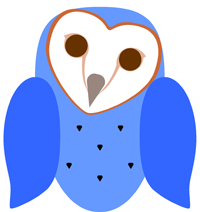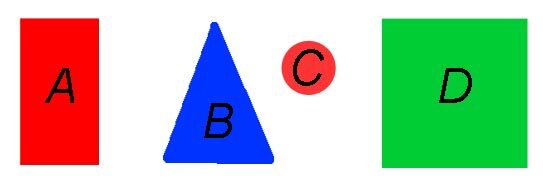
This lesson introduces the concept of attributes. An attribute is a characteristic of something. It is a feature that helps to identify the item.
An item can have attributes that are unique. This means that no other item in the group has this attribute. Items may also share attributes. For example, look at the fruit below.

Only the red raspberries are red. In this picture, being red is a unique attribute of the red raspberries. Having a smooth skin is a unique attribute of the blueberries in this picture. The black raspberries and red raspberries share the name raspberry and a bumpy skin. These are share attributes.
This lesson also introduces the concept of attribute categories. Attribute categories are useful when talking about attributes. For example, the category of color would include red, blue, green, yellow, etc. You could ask a friend, “What color is the item?” The friend will know the type of attribute that you are seeking. The attribute category of size might include small, medium, and large. You may ask a friend, “What size is the item?” The friend is not going to answer, “Red.”
Introduction Activity
It is easy to identify an item if you use its unique attribute. Using shared attributes make it more difficult to identify the correct item.
The following items are used in this activity. The attribute categories of color, size, and shape are useful in identifying which item you have selected.

Notice that the item D has 2 unique attributes. It is the only square in the group and the only green item in the group. Item B is similar. If I asked a student to identify the blue item, he or she would be able to select the item B without much trouble.
However, what would happen if I asked the student to identify the red item? Both item A and item C share that attribute. This shared attribute makes it impossible to identify the item. It requires additional clues.
Example
Here is a series of clues given to identify one of the items. Read the clues to your students. (Do not read the answers.) Let your students guess the possible items after each clue.
- This item has straight sides. (This item could be A, B, or D because they all share the attribute of straight sides.)
- This item has 4 sides. (The item could be A or D because they both have 4 sides.)
- This item is red. (With the help of all the clues, we know that item A is the only item that is the correct answer.)
Each of these clues use attributes that are not unique to the group. At least, two of the items share each of the three attributes. By carefully selecting the clues and the order of the clues, the students were forced to listen to 3 clues before identifying the item.
Have your students practice giving clues to identify one of the items above.
Middle School Activity
The challenge increases when more shapes and less colors are used. This is because more attributes are shared and less attributes are unique.
Print these items and give a copy to your students. Each item has a letter. (Notice that there is no “J” because it looks to much like an “I”.)

Each student will take turns being a leader in this activity. The leader will select an item from the group. Then the leader will think of clues that will lead the players to the item. Meanwhile, the players will number a piece of paper 1-4.
The leader will give his/her first clue. The players guess a possible item and record the letter of their guess next to the clue number. The leader will continue giving clues, one at a time. Each time a clue is given the players will record their guess.
Example 1
- Leader: My item is red.
- (Next to the number 1, the players might write A, E, G, K, or M.)
- Leader: My item is also a triangle.
- (Next to the number 2, the players might write A or E.)
- Leader: My item is also medium in size.
- The players should all write the letter A. The item in the leader’s mind is A. It is the only medium red triangle.
The players get a point for every time that they wrote the letter of the selected shape, in this case, the red triangle or the letter A. The players count their wrong answers. The leader gets one point for every wrong answer. The leader gets 2 points if the last answer is wrong. However if the clues that the leader gave do not lead to a single possible answer, then the leader gets no points as leader.
The best leaders think about the order of their clues carefully. The leader must consider when to use shared attributes and when to use unique attributes. For example, the leader above gives “triangle” as the first clue and “blue” as the second clue. All the players would know the item after only 2 clues. There is only one blue triangle.
The attribute categories used in the example above were color, shape, and size. There are other categories of attributes in this group of items. (I can think of several ways to give clues that require 4 clues.) Increasing the number of clues also increases the possible number of wrong answers to be added to the leaders score.
Example 2
Here is another example. I have used 4 clues and a few new attributes. I find it easier to make clues if I add the possible answers after the clue each time.
- Leader: My item has straight sides. (A, C, D, E, F, G, I, K, M)
- Leader: My item does not have angles, or corners, greater than 90o. (A, D, E, F, G, K)
- Leader: My item is red. (A, E, G, K)
- Leader: My item’s letter name is in the beginning of the alphabet. (A)
After every player has had the chance to be the leader, the activity is over. The players add their playing scores and their leader scores together. The highest score is the winner.
